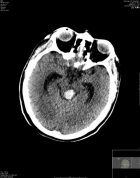Abstract
Research Article
Synthesis and characterization of CdS/CeO2 Nanocomposite with improved visible-light photocatalytic degradation of methyl orange dye
Tigabu Bekele Mekonnen*
Published: 20 June, 2022 | Volume 6 - Issue 2 | Pages: 065-074
Different types of photocatalysts in single and binary systems in different molar ratios were synthesized by the co-precipitation method. Crystal structure, surface area, morphology, bandgap energy, functional groups, and optical properties of the as-synthesized photocatalysts were characterized by using XRD, BET, SEM-EDX, UV/Vis, FTIR, and PL instruments, respectively. Photocatalytic activities of the single and binary composite were evaluated by using an aqueous solution of model pollutant MeO. Photocatalytic activities of binary CdS/CeO2 (1:1) nanocomposite were found to be higher than those of single counterparts. The degradation efficiencies of the binary system were found to be 53.73%. The reusability of the binary photocatalyst was tested and only about 33% decrement was observed after four successive runs. The degradation of MeO dye follows the pseudo-first-order kinetics for the entire as-synthesized nanocomposite. The results also suggest that in the CdS/CeO2 (1:1) composite the photoinduced electrons and holes can be effectively separated.
Read Full Article HTML DOI: 10.29328/journal.jpsp.1001077 Cite this Article Read Full Article PDF
Keywords:
Nanotechnology; Degradation; Photocatalysts; AOPs; Nanoparticle
References
- Ahmed J, Thakur A, Goyal A. Industrial wastewater and its toxic effects. Biological Treatment of Industrial Wastewater. 2021; 1-14.
- Jalil AA, Triwahyono S, Adam SH, Rahim ND, Aziz MA, Hairom NH, Razali NA, Abidin MA, Mohamadiah MK. Adsorption of methyl orange from aqueous solution onto calcined Lapindo volcanic mud. J Hazard Mater. 2010 Sep 15;181(1-3):755-62. doi: 10.1016/j.jhazmat.2010.05.078. Epub 2010 May 24. PMID: 20538408.
- Sharma V, Kakodia A,Sharma B, Pamecha S, Khandelwal R. Photocatalyticdegradation of Brilliant Blue-R by ZnO in aqueous media. International Journal of Green and Herbal Chemistry. 2013; 2(3): 730-736.
- Kansal S, Kaur N, Singh S. Photocatalytic degradation of two commercial reactive dyes in aqueous phase using nanophotocatalysts. Nanoscale Res Lett. 2009 Apr 10;4(7):709-16. doi: 10.1007/s11671-009-9300-3. PMID: 20596421; PMCID: PMC2894065.
- Prabha I and Lathasree S. Photocatalytic performance of nanocatalyst for the effective removal of dye in the wastewater. Chemical Science Transactions. 2013; 2(1): 220-224.
- Ullah I, Ali S, Hanif M, Shahid S. Nanoscience for environmental remediation: A Review. International Journal of Chemical and Biochemical Sciences. 2012; 2: 60-77.
- Tobin JM, McCabe TJD, Prentice AW, Holzer S, Lloyd GO, Paterson MJ, Arrighi V, Cormack PAG and Vilela F. Polymer-supported photosensitizers for oxidative organic transformations in flow and under visible light irradiation. ACS Catalysis. 2017; 7: 4602-4612.
- Kou J, Lu C, Wang J, Chen Y, Xu Z, Varma RS. Selectivity Enhancement in Heterogeneous Photocatalytic Transformations. Chem Rev. 2017 Feb 8;117(3):1445-1514. doi: 10.1021/acs.chemrev.6b00396. Epub 2017 Jan 17. PMID: 28093903.
- Bora LV and Mewada RK. Visible/solar light active photocatalysts for organic effluent treatment: Fundamentals, mechanisms and parametric review. Renewable and Sustainable Energy Reviews. 2017; 76: 1393-1421.
- Boyjoo Y, Sun H, Liu J, Pareek VK and Wang SA. Review on photocatalysis for air treatment: From catalyst development to reactor design. Chemical Engineering Journal. 2017; 310: 537-559.
- Yuhas BD, Smeigh AL, Douvalis AP, Wasielewski MR, Kanatzidis MG. Photocatalytic hydrogen evolution from FeMoS-based biomimetic chalcogels. J Am Chem Soc. 2012 Jun 27; 134(25):10353-6. doi: 10.1021/ja303640s. Epub 2012 Jun 13. PMID: 22662744.
- Lu X, Zhai T, Cui H, Shi J, Xie S, Huang Y, Liang C, Tong Y. Redox cycles promoting photocatalytic hydrogen evolution of CeO2 Journals of Material Chemistry. 2011; 21(15): 5569-5572.
- Zhang J, Li L, Huang X and Li G. Fabrication of Ag-CeO2core-shell nanospheres with enhanced catalytic performance due to strengthening of the interfacial interactions. Journal of Material Chemistry. 2012; 22(21): 10480-10487.
- Kusmierek E, A CeO2 Semiconductor as a photocatalytic and photoelectrocatalytic material for the remediation of pollutants in industrial wastewater: A Review. Catalysts. 2020; 10: 1435.
- Koli, Valmiki B, Kim and Jung-Sik Photocatalytic oxidation for removal of gases toluene by TiO2-CeO2 nanocomposites under UV light irradiation. Materials Science in Semiconductor Processing. 2019; 94: 70-79.
- Dytrych P, KlusonP, Dzik P, Vesely M, Morozova M, Sedlakova Z, Solcova O. Photo-electrochemical properties of ZnO and TiO2 layers in ionic liquid environment. Catalysis Today. 2014; 230: 152.157.
- Reddy BM, Khan A, Lakshmanan P, Aouine M, Loridant S, Volta JC. Structural characterization of nanosized CeO(2)-SiO(2), CeO(2)-TiO(2), and CeO(2)-ZrO(2) catalysts by XRD, Raman, and HREM techniques. J Phys Chem B. 2005 Mar 3;109(8):3355-63. doi: 10.1021/jp045193h. PMID: 16851365.
- SongY, Zhao H, Chen Z, Wang W, Huang L, Xu H, Li H. TheCeO2/Ag3PO4photocatalyst with stability and high photocatalytic activity under visible light irradiation. Physical Status Solidi A. 2016; 213(9): 2356-2363.
- You DT, Pan B, Jiang F, Zhou YG, Su WY. CdS nanoparticles/CeO2 nanorods composite with high-efficiency visible-light-driven photocatalytic activity. Applied Surface Science. 2016; 363: 154-160.
- Gogoi A and Sarma CK. Synthesis of the novel β-cyclodextrin supported CeO2 nanoparticles for the catalytic degradation of methylene blue in aqueous suspension. Materials Chemistry and Physics. 2017; 194: 327-336.
- Taddesse AM, Bekele T, Diaz I, Adgo A. Polyaniline supported CdS/CeO2/Ag3PO4nanocomposite: An “A-B” type tandem n-n heterojunctions with enhanced photocatalytic activity. Journal of Photochemistry and Photobiology, A: Chemistry, 2021; 406: 113005.
- Singh V, Sharma P and Chauhan P. Synthesis of CdS nanoparticles with enhanced optical properties. Material Characterization, 2011; 62(1): 43-52.
- Hong RY, Li JH, Chen LL, Liu DQ, Li HZ, Zheng Y, Ding J. Synthesis, surface modification and photocatalytic property of ZnO nanoparticles. Journal of Powder Technology. 2009; 189: 426-432.
- Liu B, Zhao X, Terashima C, Fujishima A, Nakata K. Thermodynamic and kinetic analysis of heterogeneous photocatalysis for semiconductor systems. Phys Chem Chem Phys. 2014 May 21;16(19):8751-60. doi: 10.1039/c3cp55317e. PMID: 24675975.
- Saggioro EM, Oliveira AS, Pavesi T, Maia CG, Ferreira LF, Moreira JC. Use of titanium dioxide photocatalysis on the remediation of model textile wastewaters containing azo dyes. Molecules. 2011 Dec 14;16(12):10370-86. doi: 10.3390/molecules161210370. PMID: 22169940; PMCID: PMC6264266.
- Leng Y. Materials characterization: Introduction to microscopic and spectroscopic methods, John Wiley and Sons (Asia) Pte Ltd.
- Roggenbuck J, Schaer H, Tsoncheva T, Minchev C, Hanss J, Tiemann M. Mesoporous CeO2: Synthesis by nanocasting, characterization and catalytic properties. Microporous and Mesoporous Materials. 2007; 101: 335-341.
- Hernandez-Gordillo A, Romero AG, Tzompantzi F, Gomez R. New nanostructured CdS fibers for the photocatalytic reduction of 4-nitrophenol. Powder Technology. 2013; 250: 97-102.
- Zhang X, Zhang N, Xu Y, Tang ZR. One-dimensional CdS nanowires CeO2 nanoparticles composites with boosted photocatalytic activity. New Journal of Chemistry. 2015; 39: 6756-6764.
- Banerjee R, Jayakrishnan R, Ayyub P. Effect of the size induced structural transformation on the band gap in CdS nanoparticles. Journal of Physics: Condensed Matter. 2000; 12: 10647-10654.
- Ijaz S, Ehsan MF, Ashiq MN, Karamat N, He T. Preparation of CdS/CeO2 core/shell composite for photocatalytic reduction of CO2 under visible-light irradiation. Applied Surface Science. 2016; 390: 550-559.
- Gupta V, Gupta AR, Kant V. Synthesis, characterization and biomedical application of nanoparticles. Science International. 2013; 1(5): 167-174.
- Raza MA, Kanwal Z, Rauf A, Sabri AN, Riaz S, Naseem S. Size- and Shape-Dependent Antibacterial Studies of Silver Nanoparticles Synthesized by Wet Chemical Routes. Nanomaterials (Basel). 2016 Apr 15;6(4):74. doi: 10.3390/nano6040074. PMID: 28335201; PMCID: PMC5302562.
- Shen Z, Chen G, Yu Y, Wang Q, Zhou C, Hao L, Li Y, He L, Mu R. Sonochemistry synthesis of nanocrystals embedded in a MoO3/CdS core-shell photocatalyst with enhanced hydrogen production and photodegradation. Journal of Material Chemistry. 2012; 22: 19646-19651.
- El-Kemary M, El-shamy H, El-mahasseb I. Photocatalytic degradation of Ciprofloxacin drug in water using ZnO nanoparticles. Journal of Luminescence. 2010; 130: 2327-2331.
- Kubelka P, Munk F. Use of diffuse reflectance spectroscopy for optical characterization of un-supported nanostructures. Journal of Applied Physics.1931; 12: 593-620.
- Tauc T, Abeies F. Optical properties of solids. IOP Publishing Ltd, North Holland, Amsterdam. 1970; 903.
- Zou Z, Qiu Y, Xie C, Xu J, Luo Y, Wang C, Yan H. CdS/TiO2 nanocomposite film and its enhanced photoelectric responses to dry air and formaldehyde induced by visible light at room temperature. Journal of Alloys Compound. 2015; 645: 17-23.
- Lopez R, Gomez R. Band-gap energy estimation from diffuse reflectance measurements on sol-gel and commercial TiO2: a comparative study. Journal of Sol-Gel Science and Technology. 2012; 61: 1-7.
- Magesh G, Viswanathan B, Viswanath RP, Varadarajan TK. Photocatalytic behavior of CeO2-TiO2 system for the degradation of methylene blue. Indian Journal of Chemicals. 2009; 3: 480-488.
- Umezawa N, Shuxin O, Ye J. Theoretical study of high photocatalytic performance of Ag3PO4. Physical Review B. 2011; 83: 035202.
- Dos Santos ML, Lima RC, Riccardi CS, Tranquilin RL, Bueno PR, Varela JA, Longo E. Preparation and characterization of ceria nanospheres by microwave-hydrothermal method. Materials Letters. 2008; 62: 4509-4511.
- Zawadzki M. Preparation and characterization of ceria nanoparticles by microwave-assisted solvothermal process. Journal of Alloys Compounds. 2008; 454: 347-351.
- Khalil KMS, Leena A, Elkabee LA, Murphy B. Preparation and characterization of thermally stable porous ceria aggregates formed via a sol-gel process of ultrasonically dispersed cerium (IV) isopropoxide. Microporous and Mesoporous Materials. 2005; 78: 83-89.
- Yu X, Ye P, Yang L, Yang S, Zhou P, Gao W. Preparation of hexagonal cerium oxide nanoflakes by a surfactant free route and its optical property. Journal of Material Research. 2007; 22: 3006-3013.
- Prekajski M, Fruth V, Andronescu C, Trandafilovic LV, Pantic J, Kremenovic A, Matovic B. Thermal stability of Ce1-xBixO2-(x = 0.1-0.5) solid solution. Journal of Alloys and Compounds. 2013; 578: 26-31.
- Salimi F, Abdollahifar M, Jafari P, Hidaryan M. A new approach to synthesis and growth of AlOOH nanocrystalline with high pore volume. Journal of Serbia Chemical Society. 2007; 82: 1-11.
- Ho C, Yu JC, Kwong T, Mak AC, Lai S. Morphology controllable synthesis of mesoporous CeO2 nano and microstructures. Chemical Materials. 2005; 17: 4514-4522.
- Lefebvre J, Austing DG, Bond J, Finnie P. Photoluminescence imaging of suspended single-walled carbon nanotubes. Nano Lett. 2006 Aug;6(8):1603-8. doi: 10.1021/nl060530e. PMID: 16895343.
- Katsumata H, Hayashi T, Taniguchi M, Suzuki T, Kaneco S. Highly efficient visible light driven AgBr/Ag3PO4 hybrid photocatalysts with enhanced photocatalytic activity. Materials Science in Semiconductor Processing. 2014; 25: 68-75.
- Ji P, Zhang J, Chen F, Anpo M. Study of adsorption and degradation of Acid Orange 7 on the surface of CeO2 under visible light irradiation. Applied Catalysis B.2009; 85(3-4): 148-154.
- Geresu Polyaniline supported CdS/ZnO/Ag3PO4 nanocomposite: synthesis and characterization for photocatalytic activity and antimicrobial applications. MSc Thesis, Haramaya University, Haramaya, Ethiopia. 2017.
- Zhou P, Le Z, Xie Y, Fang J, Xu J. Studies on facile synthesis and properties of mesoporous CdS/TiO2 composite for photocatalysis applications. Journal of Alloys and Compounds. 2017; 692: 170-177.
- Ren J, Chai Y, Liu Q, Zhang L, Dai WL. Intercorrelated Ag3PO4 nanoparticles decorated with graphic carbon nitride: Enhanced stability and photocatalytic activities for water treatment. Applied Surface Science. 2007; 403: 177-186.
- Wang P, Huang B, Qin X, Zhang X, Dai Y, Wei J, Whangbo MH. Ag@AgCl: a highly efficient and stable photocatalyst active under visible light. Angew Chem Int Ed Engl. 2008;47(41):7931-3. doi: 10.1002/anie.200802483. PMID: 18773395.
- Zhang W, Hu C, Zhai W, Wang Z, Sun Y, Chi F, Ran S, Liu X, Lv Y. Novel Ag3PO4/CeO2 p-n hierarchical heterojunction with enhanced photocatalytic Materials Research. 2006; 19(3): 673-679.
- Fujishima A, Rao TN, Tryk DK. Titanium dioxide photocatalysis. Journal of Photochemistry and Photobiology C: Photochemistry Reviews. 2000; 1(1): 1-21.
- Hidalgo D, Bocchini S, Fontana M, Saraccob G, Hernandez S. Green and low-cost synthesis of PANI-TiO2 nanocomposite mesoporous films for photoelectrochemical water splitting. Royal Society of Chemistry. 2015; 5: 49429-49438.
- Ameen A, Akhtar MS, Kim YS, Yang B, Shin HS. An effective nanocomposite of polyaniline and ZnO: preparation, characterizations, and its photocatalytic activity. Colloid Polymer Sciences. 2011; 289: 415-421.
- Li J, Zhu L, Wu Y, Harima Y, Zhang A, Tang H. Green and low-cost synthesis of PANI/TiO2 nanocomposite mesoporous films for photoelectrochemical water splitting. Polymer. 2006; 47: 7361-7367.
Figures:

Figure 1
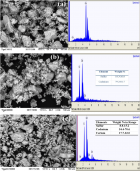
Figure 2
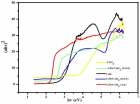
Figure 3

Figure 4
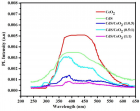
Figure 5
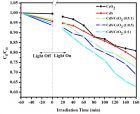
Figure 6
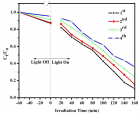
Figure 7
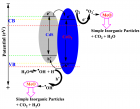
Figure 8
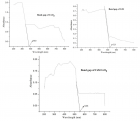
Figure 9
Similar Articles
-
Impact of Calcium Phosphate Nanoparticles on Rice PlantHrishikesh Upadhyaya*,Lutfa Begum,Bishal Dey,P K Nath,S K Panda. Impact of Calcium Phosphate Nanoparticles on Rice Plant. . 2017 doi: 10.29328/journal.jpsp.1001001; 1: 001-010
-
Physiological impact of Zinc nanoparticle on germination of rice (Oryza sativa L) seedUpadhyaya H*,Roy H,Shome S,Tewari S,Bhattacharya MK,Panda SK. Physiological impact of Zinc nanoparticle on germination of rice (Oryza sativa L) seed . . 2017 doi: 10.29328/journal.jpsp.1001008; 1: 062-070
-
Role of HECT ubiquitin protein ligases in Arabidopsis thalianaYing Miao*,Wei Lan,Weibo Ma. Role of HECT ubiquitin protein ligases in Arabidopsis thaliana. . 2018 doi: 10.29328/journal.jpsp.1001016; 2: 020-030
-
Synthesis and characterization of CdS/CeO2 Nanocomposite with improved visible-light photocatalytic degradation of methyl orange dyeTigabu Bekele Mekonnen*. Synthesis and characterization of CdS/CeO2 Nanocomposite with improved visible-light photocatalytic degradation of methyl orange dye. . 2022 doi: 10.29328/journal.jpsp.1001077; 6: 065-074
-
An overview of the developments of nanotechnology and heterogeneous photocatalysis in the presence of metal nanoparticlesTigabu Bekele Mekonnen*. An overview of the developments of nanotechnology and heterogeneous photocatalysis in the presence of metal nanoparticles. . 2022 doi: 10.29328/journal.jpsp.1001083; 6: 103-114
-
Photocatalytic degradation of organic pollutants in the presence of selected transition metal nanoparticles: reviewTigabu Bekele Mekonnen*. Photocatalytic degradation of organic pollutants in the presence of selected transition metal nanoparticles: review. . 2022 doi: 10.29328/journal.jpsp.1001084; 6: 115-125
-
The Effect of Zinc Oxide, Copper, and Silver Nanoparticles Synthesized by the Green Method for Controlling Strawberry Gray Mold Fungus, B. Cinerea PersSareh Hashemi*, Masoud Ahmadzadeh. The Effect of Zinc Oxide, Copper, and Silver Nanoparticles Synthesized by the Green Method for Controlling Strawberry Gray Mold Fungus, B. Cinerea Pers. . 2023 doi: 10.29328/journal.jpsp.1001106; 7: 050-065
Recently Viewed
-
Pneumothorax as Complication of CT Guided Lung Biopsy: Frequency, Severity and Assessment of Risk FactorsGaurav Raj*,Neha Kumari,Neha Singh,Kaustubh Gupta,Anurag Gupta,Pradyuman Singh,Hemant Gupta. Pneumothorax as Complication of CT Guided Lung Biopsy: Frequency, Severity and Assessment of Risk Factors. J Radiol Oncol. 2025: doi: 10.29328/journal.jro.1001075; 9: 012-016
-
The Police Power of the National Health Surveillance Agency – ANVISADimas Augusto da Silva*,Rafaela Marinho da Silva. The Police Power of the National Health Surveillance Agency – ANVISA. Arch Cancer Sci Ther. 2024: doi: 10.29328/journal.acst.1001046; 8: 063-076
-
A Comparative Study of Serum Sodium and Potassium Levels across the Three Trimesters of PregnancyOtoikhila OC and Seriki SA*. A Comparative Study of Serum Sodium and Potassium Levels across the Three Trimesters of Pregnancy. Clin J Obstet Gynecol. 2023: doi: 10.29328/journal.cjog.1001137; 6: 108-116
-
Chaos to Cosmos: Quantum Whispers and the Cosmic GenesisOwais Farooq*,Romana Zahoor*. Chaos to Cosmos: Quantum Whispers and the Cosmic Genesis. Int J Phys Res Appl. 2025: doi: 10.29328/journal.ijpra.1001107; 8: 017-023
-
Phytochemical Compounds and the Antifungal Activity of Centaurium pulchellum Ethanol Extracts in IraqNoor Jawad Khadhum, Neepal Imtair Al-Garaawi*, Antethar Jabbar Al-Edani. Phytochemical Compounds and the Antifungal Activity of Centaurium pulchellum Ethanol Extracts in Iraq. J Plant Sci Phytopathol. 2024: doi: 10.29328/journal.jpsp.1001137; 8: 079-083
Most Viewed
-
Evaluation of Biostimulants Based on Recovered Protein Hydrolysates from Animal By-products as Plant Growth EnhancersH Pérez-Aguilar*, M Lacruz-Asaro, F Arán-Ais. Evaluation of Biostimulants Based on Recovered Protein Hydrolysates from Animal By-products as Plant Growth Enhancers. J Plant Sci Phytopathol. 2023 doi: 10.29328/journal.jpsp.1001104; 7: 042-047
-
Sinonasal Myxoma Extending into the Orbit in a 4-Year Old: A Case PresentationJulian A Purrinos*, Ramzi Younis. Sinonasal Myxoma Extending into the Orbit in a 4-Year Old: A Case Presentation. Arch Case Rep. 2024 doi: 10.29328/journal.acr.1001099; 8: 075-077
-
Feasibility study of magnetic sensing for detecting single-neuron action potentialsDenis Tonini,Kai Wu,Renata Saha,Jian-Ping Wang*. Feasibility study of magnetic sensing for detecting single-neuron action potentials. Ann Biomed Sci Eng. 2022 doi: 10.29328/journal.abse.1001018; 6: 019-029
-
Pediatric Dysgerminoma: Unveiling a Rare Ovarian TumorFaten Limaiem*, Khalil Saffar, Ahmed Halouani. Pediatric Dysgerminoma: Unveiling a Rare Ovarian Tumor. Arch Case Rep. 2024 doi: 10.29328/journal.acr.1001087; 8: 010-013
-
Physical activity can change the physiological and psychological circumstances during COVID-19 pandemic: A narrative reviewKhashayar Maroufi*. Physical activity can change the physiological and psychological circumstances during COVID-19 pandemic: A narrative review. J Sports Med Ther. 2021 doi: 10.29328/journal.jsmt.1001051; 6: 001-007

HSPI: We're glad you're here. Please click "create a new Query" if you are a new visitor to our website and need further information from us.
If you are already a member of our network and need to keep track of any developments regarding a question you have already submitted, click "take me to my Query."






